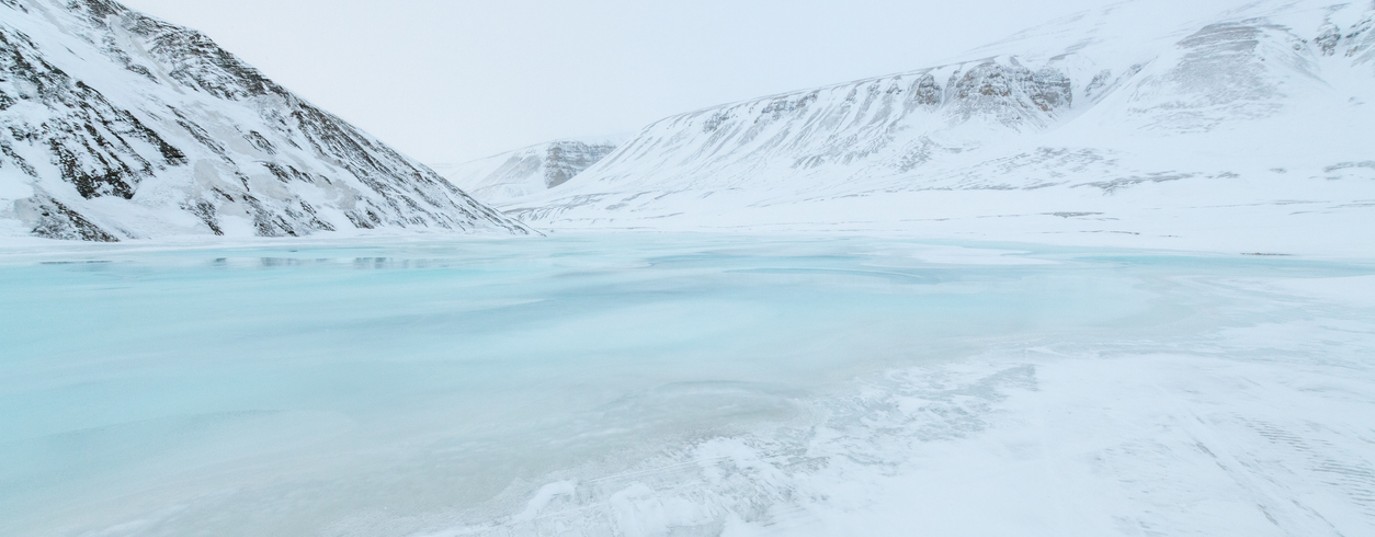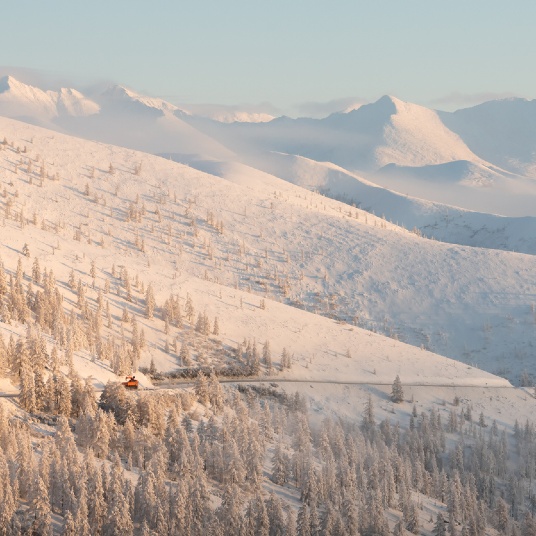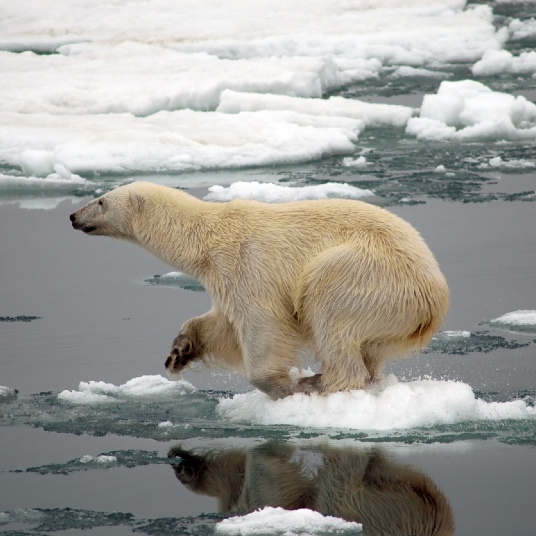Permafrost, from carbon sink to source of pollution
When the Arctic ice melts, not only the sea level rises - tonnes of CO2 escape into the atmosphere. And that’s how permafrost affects climate change.
In Summer 2020, a bizarre event happened that just about sums up climate change. The Arctic Circle beat its own polar temperature record in reaching 38°C. A year earlier, Danish climatologist Stefeen M. Olsen had tweeted a photo that went viral of flooding across the Greenland ice, which he took as he traveled by sleigh to collect measuring equipment. The consequences of all this? Ice sheets frozen for centuries were melting for the first time in our history. The rapid warming of the Arctic threatens the whole planet and complicates the already difficult challenge of limiting the increase in global temperature to between 1.5 and 2°C. Below, we explain the relationship between permafrost and climate change.
What will I learn from this article:
- What is permafrost?
- What impact could it have on climate change?
- The disappearance of permafrost threatens the Paris Agreement objectives
- Permafrost means we must be more ambitious in fighting climate change
What is permafrost?
 Permafrost is the permanently frozen soil below the surface of the Earth or on top of it. It can extend to cover whole regions, as in the case of the Arctic tundra, or is limited to remote places, such as the peak of a mountain.
Permafrost is the permanently frozen soil below the surface of the Earth or on top of it. It can extend to cover whole regions, as in the case of the Arctic tundra, or is limited to remote places, such as the peak of a mountain.
Around a quarter of the whole northern hemisphere is permafrost, and here the soil remains frozen even in summer. It is widespread across the Arctic regions of Siberia, Canada, Greenland, and Alaska, where almost 85% of the state sits on a layer of permafrost.
“Around a quarter of the whole Northern hemisphere is permafrost”
It is also found across the Tibetan Plateau, in high-altitude regions such as the Rocky Mountains, and on the bed of the Arctic Ocean as submarine permafrost. In the southern hemisphere, where there is less surface area for freezing, permafrost is found in mountainous regions such as the South American Andes and New Zealand’s Southern Alps, as well as below the Antarctic.
What impact can permafrost have on climate change?
Research by an international team published in Nature Communications estimates that the quantity of carbon stored in permafrost is four times greater than the combined amount of CO2 emitted by humans in the modern age.
“The quantity of carbon stored in permafrost is four times greater than the combined amount of CO2 emitted by humans”
Global warming is increasing temperatures across the globe, but even more in the Arctic region, which is heating around three times quicker than the rest of the Earth. This affects the permafrost dramatically. According to the Intergovernmental Panel on Climate Change (IPCC), the annual 0.12°C rise in global temperature Is causing the ice layer to lose 40% of its thickness.
This is worrying for several reasons. The first is that permafrost, instead of retaining CO2 and methane, has now become an emitter of these gases, i.e. it has gone from being a carbon sink to become a source of pollution.
The greenhouse gases that have escaped are raising temperatures even more, which in turn is aggravating the melting of the permafrost. It is causing what scientists call a “loopback”, amplifying the damage done by the initial melting.
Another effect causing further melting of the permafrost is the appearance of lethal microorganisms.
Perhaps you’ll recall the case, back in 2015, of the carcass of a dead reindeer in Yamal Peninsula (Siberia). What might have begun as an anecdote, ended up being an outbreak of anthrax that killed more than 2,000 reindeer and a 12-year-old child. The cause? The organic remains of the reindeer contained Bacillus anthracis, the bacteria responsible for anthrax.
The disappearance of permafrost threatens the Paris Agreement objectives
 According to an article published in the scientific review, Proceedings of the National Academy of Sciences of the United States of America (PNAS), despite the impact the melting of the layer could have on climate change, most models and systems evaluating it don’t take into account the carbon emissions from permafrost.
According to an article published in the scientific review, Proceedings of the National Academy of Sciences of the United States of America (PNAS), despite the impact the melting of the layer could have on climate change, most models and systems evaluating it don’t take into account the carbon emissions from permafrost.
And yet it presents a great challenge when trying to comply with the already difficult objective of the Paris Agreement to keep the average global temperature increase well below 1.5°C above preindustrial levels.
In fact, when in 2020 over 70 countries renewed their nationally determined contributions (find out more about these here) with respect to their commitments to the Paris Agreement, these new plans also failed to take into account emissions from the Arctic permafrost.
Permafrost means we must be more ambitious in halting climate change
It is a vicious circle. The more greenhouse gases we emit to the atmosphere, the quicker the permafrost melts and the more carbon dioxide escapes to the atmosphere. This is why it is imperative that both governments and companies achieve carbon neutrality as fast as possible.
"The more greenhouse gases we emit to the atmosphere, the quicker the permafrost melts and the more carbon dioxide escapes to the atmosphere”
Scientists are stressing that the next international assessments (for example, the five-year global inventory of the Paris Agreement and 7th IPCC report) should include the full scope of carbon emissions from permafrost.
The science surrounding permafrost should also be incorporated in national and international policies to raise awareness about the impact melting has on people who live in the Arctic and on the world climate.
For the moment, the path to follow remains the same: eliminate fossil fuels from all our activities, commit to renewable energies and trust that the effort and commitment of everyone leads to the sustainable development our planet needs.
Sources:
https://www.nature.com/articles/s41558-019-0592-8
https://www.nrdc.org/stories/permafrost-everything-you-need-know
https://www.sostenibilidad.com/cambio-climatico/imagen-deshielo-sobrecoge-al-mundo

